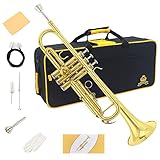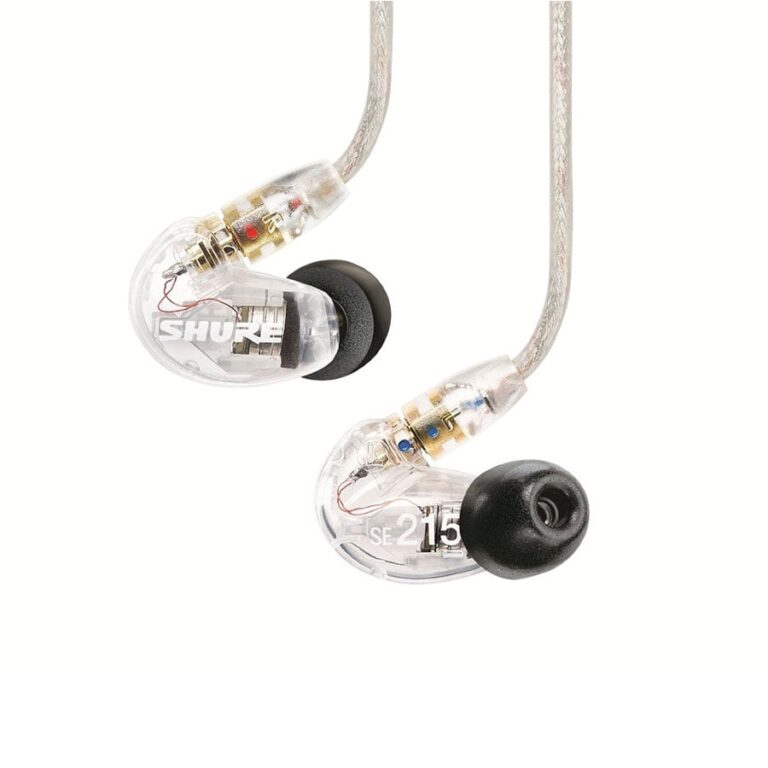Flugelhorn vs Trumpet: The Main Differences
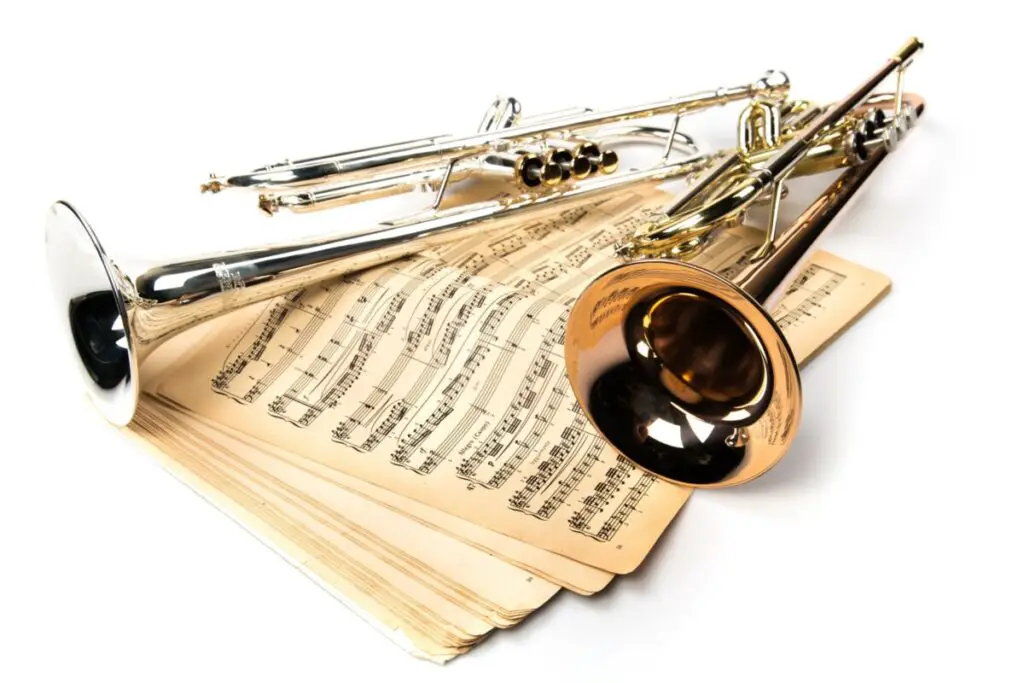
Ever attended a live concert, jazz performance, or even a marching band parade, where the sweet melodies of brass instruments swayed you? Have you found yourself wondering about the beautiful, soulful sound that doesn’t quite resemble a trumpet’s vibrant call? If so, you might have been listening to the dulcet tones of a flugelhorn. But, what exactly differentiates a flugelhorn from a trumpet?
The primary difference between a flugelhorn and a trumpet is its design and sound. The flugelhorn has a wider, conical bore and a larger bell which produce a darker, mellower tone. Conversely, the trumpet, with its cylindrical bore and smaller bell, creates a brighter, more piercing sound.
This article aims to delve deeper into these fascinating instruments, answering questions that will help you understand their differences, nuances, and which one may suit your musical aspirations better.
What is a Flugelhorn?
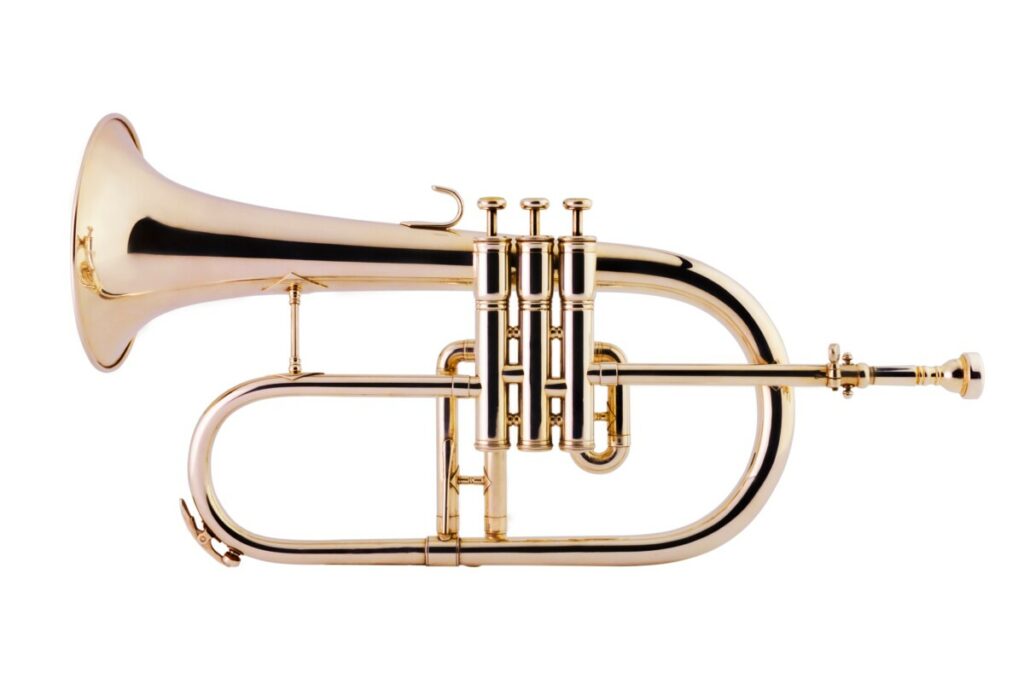
The flugelhorn is part of the brass family of instruments, so it’s most often made of shaped brass. It’s roughly the same length as a trumpet. The metal is twisted in a circle, with a wide cone at the end of the instrument.
The flugelhorn is played by using a mouthpiece that is inserted into the back end of the instrument. The musician plays by touching this mouthpiece and producing a buzzing sound.
Structure and Material
Constructed predominantly from brass, the flugelhorn shares materials with the trumpet but diverges in its design. Its flared, conical bore leads to a large bell that aids in producing a dark and round sound, a characteristic that defines the instrument.
Timbre
The flugelhorn is renowned for its lush, warm, and dark tone, which contrasts the brighter and more piercing sound of the trumpet. Its timbral qualities offer a soothing auditory experience, making it a popular choice for ballads and softer music pieces.
Range
The flugelhorn possesses a range somewhat similar to that of the Bb trumpet, yet it traditionally leans towards a more restrained and darker sonic landscape, accentuating the lower to middle registers. Its range offers both expressive melodic possibilities and a rich harmonic texture in ensemble settings.
Usage in Different Genres
From jazz ensembles to brass bands, the flugelhorn has been embraced for its unique sound. In jazz, it has been utilized by iconic players to deliver soul-stirring solos, while in brass bands, it provides a rich, warm harmonic foundation. Its versatile nature allows it to fit seamlessly in a variety of musical contexts, be it classical settings or contemporary music productions.
History of the Flugelhorn
The flugelhorn was first developed in the early 19th century in northern Germany. It was inspired by the English Bugle, which was used in battles during wars and hunting during peacetime.
The main difference between the bugle and flugelhorn was the introduction of valved pistons. These pistons, the buttons the musician’s fingers can push down, can alter the notes coming through the flugelhorn and give the musician more control over the sound produced. Modern flugelhorns have 3 to 4 pistons.
Like other brass instruments, this initial buzz passes through the body and is amplified by the brass walls before exiting through the wide cone at the end. The flugelhorn is known for producing a warm and smooth tone. The longer bell of the flugelhorn allows a musician to produce mellow notes that blend well with other brass and stringed instruments.
What is a Trumpet?
The trumpet is considered to be one of the most popular brass instruments. The trumpet is also one of the most recognizable instruments in appearance and sound. It is considered a leading instrument among brass instruments with loud, bright, and clear notes.
Timbre
The trumpet is known for its bright, sharp, and sometimes piercing timbre, which allows it to carry melodies over other sounds, making it a lead instrument in many types of music ensembles.
Range
A standard Bb trumpet has a range that spans over two and a half octaves, though experienced players can extend this further through advanced techniques. It is a transposing instrument, meaning that the written notes are different from the sounding pitch.
Historical Overview
The trumpet has a rich history, dating back to antiquity when it was used in various cultures for signaling and ceremonial purposes. Its role evolved over centuries, taking a prominent place in orchestral and solo performances in the classical music era, and later branching into jazz, pop, and other contemporary music styles, showcasing its versatility across genres.
Usage in Different Genres
The trumpet holds a pivotal role in various music genres, including classical orchestral settings, jazz ensembles, pop music, and marching bands. Its vibrant and striking sound palette has cemented its place as a cornerstone instrument, offering both powerful solo capabilities and harmonious ensemble contributions.
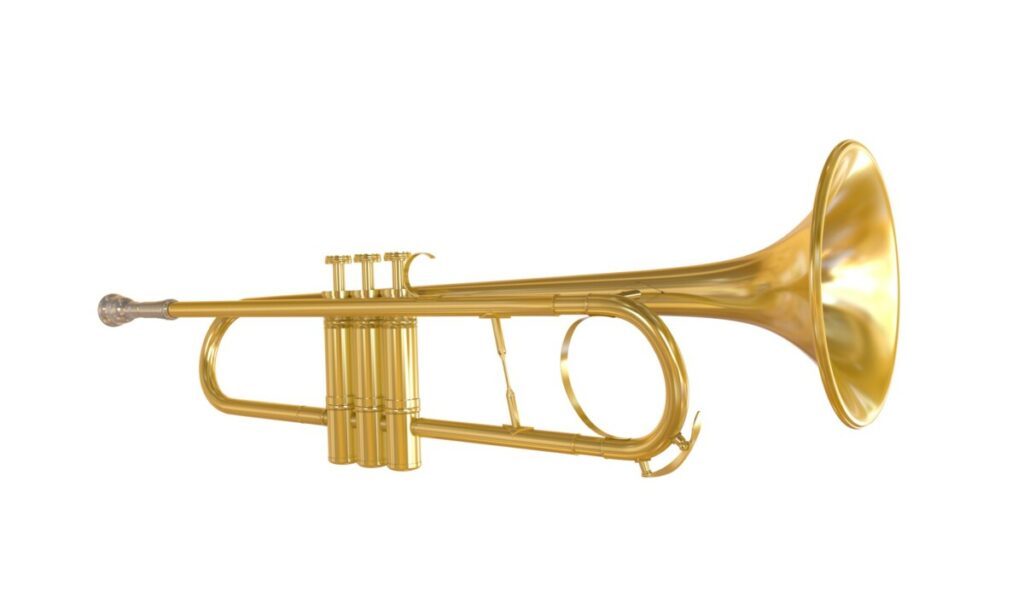
7 Differences Between A Flugelhorn and Trumpet
Here are some of the biggest differences between a flugelhorn and a trumpet.
1. Sound
One of the central elements that differentiate the flugelhorn from the trumpet is the nature of the sound each instrument produces.
The flugelhorn, often found in jazz and pop ensembles, creates a smooth, rich, and velvety sound. Its tone is often described as “dark” and “mellow,” making it perfect for intimate, emotional musical pieces.
It’s ideal for solo passages or for adding depth to the lower parts of a brass ensemble. The flugelhorn’s unique sound results from its wide, conical bore, which gradually widens from the mouthpiece to the bell, and its large bell. The range of notes that flugelhorns can produce is more limited than trumpets.
The trumpet, however, is versatile and can be used in various music genres, including classical, jazz, pop, and marching band music. It creates a brighter, more resonant, and piercing sound, perfect for carrying melodies in a large ensemble or solo performance. This sound quality is due to the trumpet’s cylindrical bore, which maintains the same diameter for a large part of the instrument’s length before flaring into a smaller bell.
2. Appearance and Design
While at first glance, a flugelhorn and a trumpet might look like the same instrument, once you take a closer look at them, you will start to notice some of the differences.
The flugelhorn is typically heavier and larger than a trumpet. It features a conical bore and a larger bell, which means the tube widens gradually from the mouthpiece to the end of the bell.
This design impacts the air resistance, making it slightly harder to play high notes compared to the trumpet. Furthermore, the flugelhorn usually has three piston valves, though some models have a fourth valve to extend the instrument’s lower range.
The trumpet, conversely, is lighter and more compact, with a cylindrical bore and a smaller bell. This design allows for greater ease in playing higher notes, but it might require more breath control for maintaining tone quality in lower registers. The trumpet typically has three piston valves used to alter the pitch.
Trumpets tend to weigh anywhere between 2 to 3 pounds. A flugelhorn, on average, weighs between 9 to 11 pounds. A flugelhorn is much heavier than a trumpet, which might make it more difficult for newer musicians to play it if they are not expecting its weight.
3. Mouthpiece
While each instrument uses a metal mouthpiece, the mouthpieces are slightly different. These different mouthpieces are part of why each instrument produces such a unique sound.
The flugelhorn typically features a V-shaped mouthpiece, larger and deeper than a trumpet, aiding in producing a mellow tone. The trumpet commonly uses a cup-shaped mouthpiece, smaller and shallower than a flugelhorn, facilitating a brighter tone.
4. Components
The distinctiveness of the flugelhorn and trumpet extends beyond their sound and general design. Let’s look at the specific components of these instruments and how they contribute to their function and sound.
The piston valves on a flugelhorn change the pitch by diverting the air through additional tubing. The third valve is often used to lower the pitch by a tone and a half, and the second valve usually lowers the pitch by half a tone. The first valve lowers the pitch by a whole tone. In some models, a fourth valve is added to extend the instrument’s lower range.
A flugelhorn’s leadpipe—the pipe connecting the mouthpiece to the rest of the instrument—is also wider and shorter than a trumpet’s. This creates a more significant air column, enhancing the instrument’s darker sound.
The trumpet has three piston valves for altering the pitch. The first valve lowers the pitch by a whole tone, the second by a half-tone, and the third by a tone and a half. The trumpet’s leadpipe is longer and narrower than the flugelhorn, resulting in a smaller air column that aids in producing a more resonant, bright sound.
5. Maintenence
Since the flugelhorn has a larger bore and bell, it may accumulate more moisture and debris. Therefore, regular cleaning is essential. Use a snake brush for the tubing and a mouthpiece brush for the mouthpiece. After cleaning, applying valve oil to the pistons will keep them moving smoothly.
Additionally, due to its size and weight, the flugelhorn may be prone to dents and scratches. Storing it in a sturdy case when not in use is recommended. Regularly check for any loose components or damage that could affect sound quality.
The trumpet, due to its smaller size, may require less frequent cleaning. However, regular cleaning is still necessary, especially in the leadpipe, which can accumulate debris. Use a snake brush and a mouthpiece brush for thorough cleaning. Applying valve oil to the pistons will ensure their smooth operation.
Just like the flugelhorn, the trumpet should be stored in a sturdy case when not in use to prevent damage. Regularly inspect your trumpet for any loose parts or damage that may impair its sound.
6. Cost
Flugelhorns are generally more expensive than trumpets due to their larger size and more complex design. They also may not be as readily available in music stores due to lower demand. However, many manufacturers and online platforms offer a range of options, allowing you to find one that suits your budget and preferences.
- Vertical valve tubing,Traditionally, flugelhorns are made with vertical valve tubing.
- Hand-lapped pistons and slides ensures an absolutely perfect fit and seal between the pistons and casing or slide parts. Such a perfect fit helps achieve smooth air flow and smooth action and improve the response and intonation of the instrument.
- Perfectly rounded tubing results in less turbulence and a smoother airflow, thus allowing for an excellent scale and reduced resistance.
- Third valve slide trigger assembly flugelhorns
- yellow brass flugelhorn
- Beautiful yellow brass body construction
- Cleaning Cloth and gloves for cleaning
- High quality carrying case for easy and safe transportation
- solid Brass Bb Flugel Horn
- Includes Nickel plated Mouthpiece
- Free light weight hard case
- Length 18 inches,Bell diameter 6 inches
Trumpets, being more popular and widely used, are typically less expensive and readily available in various models. This accessibility, coupled with a wide price range, makes it easier for beginners and those on a budget to start their musical journey.
- ❤️AMAZING TIMBRE — The sound and timbre of Eastar Bb trumpet are pure and bright, abundant and powerful, with excellent vibration. Also a user-friendly brass instrument for beginners and students.
- 🎺RELIABLE DESIGN — Equipped with a unique valve system (1/100mm mechanical accuracy) designed by Eastar, the trumpet is highly durable during performance without worrying about getting stuck.
- ✔️EXCELLENT CRAFTSMANSHIP — The pipe (0.459” in diameter) is made of high-quality brass and cupronickel you can trust. The valves link each pipe precisely to provide strong air-tightness and high playability.
- ✨BEAUTIFUL APPEARANCE — Applying nice-looking lacquer plating, dazzling and shiny color, superb reflection, this trumpet must be a decent choice as a gift for those who you care and love.
- 🎁COMES WITH EVERYTHING NEEDED — The package includes Eastar B flat Trumpet, White Gloves, Cleaning Suit, 7C Mouthpiece, Hard Case, 12-Month Product Warranty backed by our awesome customer support team ready to help.
- ✔️【Great Trumpet for Beginners】: YASISID Trumpet sound is loud, crisp and high-pitched. Standard Trumpet is ideal for beginner adult, and learner users. This is an excellent instrument for any use.
- ✔️【Elegant Design】: YASISID Trumpet consists of mouthpiece, tube body and mechanical three parts. The diameter of the bell mouth is 123mm, the diameter of the pipe is 11.65mm, and the length of the pipe is 1.355 meters.
- ✔️【Excellent Craftsmanship】: Solid and durable brass body, high-quality electrophoretic paint craftsmanship, durable dual waterproof valve design, responsive stainless steel piston, fast spring rebound, and good water tightness,good sealing.
- ✔️【Balanced Tone】: This well-crafted beginner trumpet for adults produce a penetrating, powerful, and vibrating sound. Uplifting melodies can be played, as well as lyrical and beautiful passages.
- ✔️【Package Contains】: YASISID 68# brass trumpet, high-quality hard case, 7C mouthpiece, gloves, cleaning cloth, a set of cleaning brushes, nice backpack bag.
7. Training
Mastering the flugelhorn involves developing breath control and learning to handle its larger size and weight. For those transitioning from the trumpet, adjusting to the flugelhorn’s wider bore and darker sound may initially be challenging but ultimately rewarding. Having a qualified instructor can accelerate this learning process.
Becoming proficient at the trumpet also demands breath control, especially for playing in the lower registers. Practicing scales, arpeggios, and other exercises will enhance your versatility and proficiency. Similar to the flugelhorn, learning from a qualified instructor can be beneficial.
Which Is Easier To Play – Flugelhorn or Trumpet?
Determining whether the flugelhorn or the trumpet is easier to play can be somewhat subjective as it largely depends on individual preferences, physical characteristics, and musical backgrounds. However, we can analyze several aspects such as mouthpiece size, bore size, and the general handling of each instrument to provide a nuanced perspective on the topic.
Mouthpiece and Embouchure
The flugelhorn generally has a larger, more conical mouthpiece compared to the trumpet’s more shallow and cup-shaped mouthpiece. This means that it is somewhat forgiving for beginners, facilitating a richer and warmer sound even without a perfect embouchure. The larger mouthpiece can, however, demand more air and require a bit more control over one’s breath.
Bore Size
The flugelhorn features a larger bore size compared to the trumpet, which means it produces a darker, more mellow sound. While this larger bore size can make it easier to hit notes accurately, it also means that the flugelhorn requires a greater volume of air, potentially making it more physically demanding, particularly for new players.
General Handling
Both instruments have their own unique challenges when it comes to handling. The trumpet, with its brighter and more piercing sound, requires a significant level of control to master its extensive range of notes and dynamics. The flugelhorn, on the other hand, offers a softer, more forgiving sound which might be easier for beginners to control initially.
Repertoire
Trumpet has a vast repertoire spanning classical, jazz, pop, and more, meaning players might find more opportunities and resources for learning and playing. Flugelhorn repertoire is more limited, which can be both a boon and a bane: fewer complex pieces to work through can mean a gentler learning curve, but also limited materials for advanced learning.
Wrap Up
Overall, flugelhorns and trumpets are similar because they are both brass instruments. However, they produce very different sounds, and trumpets are easier to hold for long periods of time than flugelhorns because they are lighter.
If you are unsure which one you want to learn to play, go to a music store and talk to an associate. They can tell you more about the instruments and help you determine which will be best for you.






